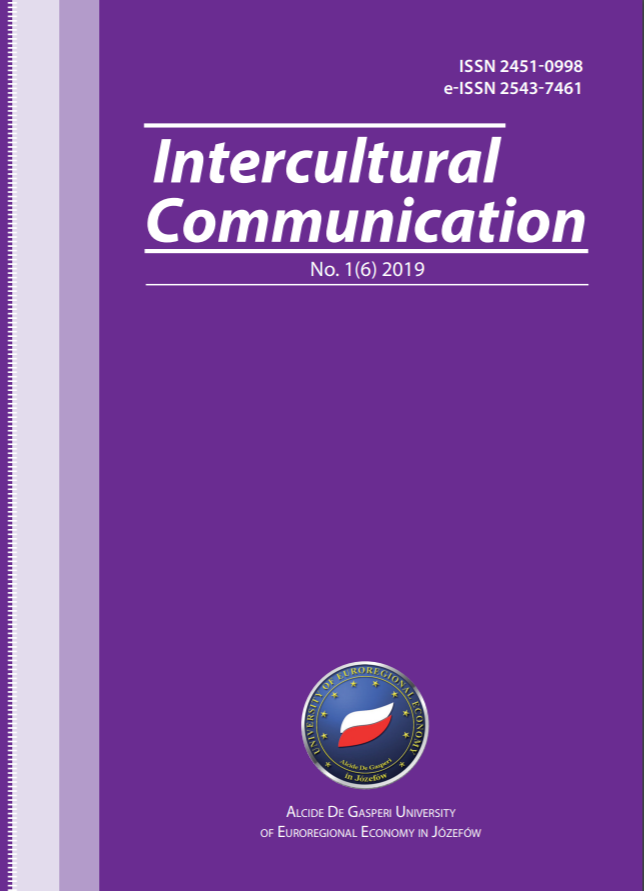Міжкультурна комунікація: від розрізнення до включення
Intercultural Communication: from Distinction to Inclusion
Author(s): Marina KolinkoSubject(s): Philosophy
Published by: Wydawnictwo Akademii Nauk Stosowanych WSGE im. A. De Gasperi w Józefowie
Keywords: intercultural communication; distinction; inclusion; differentiated inclusion; exclusion; acculturation
Summary/Abstract: The article is devoted to the study of the mechanisms of intercultural interaction and topological configuration of transition from the home world to the world of another culture. Intercultural communication is regarded as a complex of communicative ties with cultural environment, contextual phenomena that influences the change in the content and boundaries of communicative interaction. It challenges meeting with unfamiliar cultural behaviors, manifestations of the Other.Рurpose. Creation of a topological scheme for the exclusion/inclusion of a migrant-communicant from/to a new cultural environment, based on the experience of internal immigrants in Ukraine.Methods. The main method of obtaining data for an article is the method of collecting and analyzing information from open sources, including reports from all-Ukrainian sociological surveys, materials of research on world migration, intercultural experience. The material has also been collected through the inclusive observations of the author beeing a representative of the internal immigrants social group, a teacher of the university, who was evacuated from the conflict zone, a direct witness of events.Results. It has been established that the traumatism of the socio-cultural transition affects communicant relations with the new environment. The introduction of a communicant to another cultural environment can take place in several topological variants: public inclusion, inclusion in the home world of the diaspora, integration into the host community, differentiated positive or negative inclusion, exclusion from the world of a new culture.Conclusions. The topology of inclusion/exclusion leads to defining and understanding of complex configuration of the intersection and mixing of the variants of the interaction of the migrant with the domestic and new cultures during the period of acculturation. The research has confirmed the hypothesis that the most desirable for the settlers of the Donbas is the integration strategy. For the majority of communicants-settlers a high degree of adaptive inclination is a characteristic, which is explained by the commonality of civic identity with the inhabitants of the regions of arrival, the influence of the value choice on the decision to resettlement, the knowledge of the Ukrainian language, readiness for professional and everyday integration.
Journal: Intercultural Communication
- Issue Year: 1/2019
- Issue No: 6
- Page Range: 189-212
- Page Count: 24
- Language: Ukrainian

